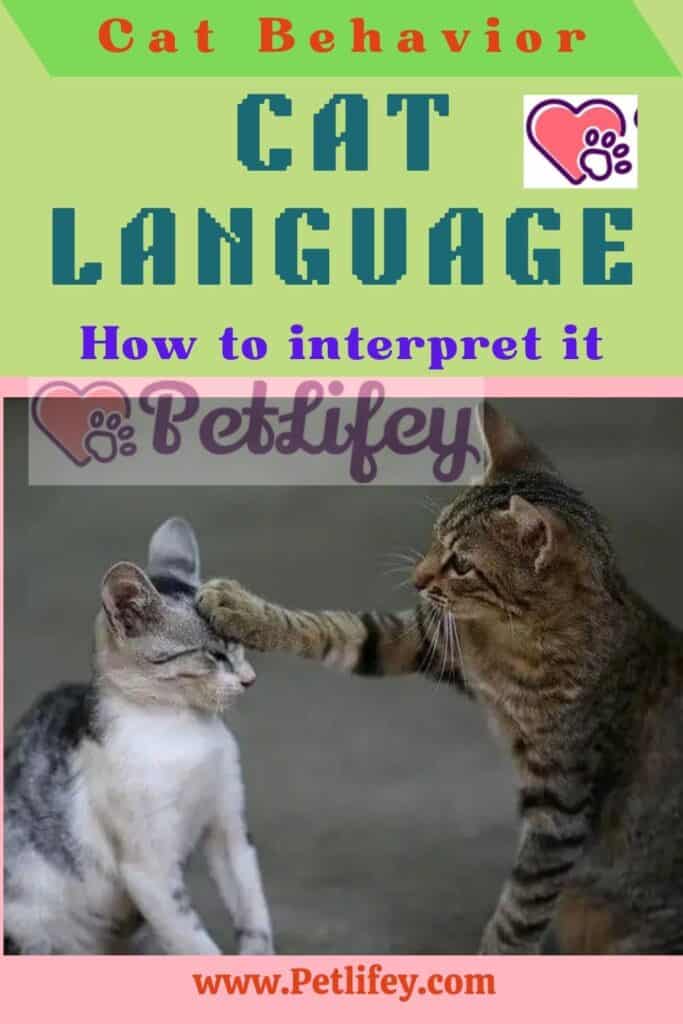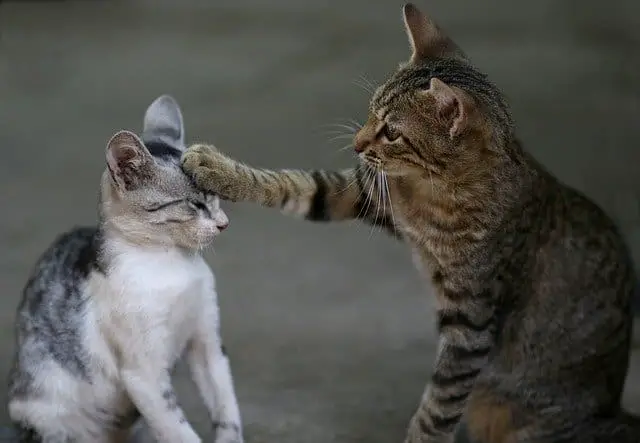
Cats language, owners dream of learning to understand it because these animals, much more than their fellow dogs, are enigmatic. They have a nice temper, much less linear and often even moody, which is why if we could at least partially decipher the Cat Language, coexistence could improve. And become an idyll. It is said that the more we talk to cats, the more they are encouraged and willing to communicate with us: let’s try, while also being careful to listen and observe them, two actions that we forget to do even with humans, taken by the great desire to tell who we are.
Cat language: meowing
The meow is the talk of the cat, it is certainly not the only element of the Cat Language to look after but let’s start from here. There are different shades of meowing but all of them imply the feline’s desire to tell us something. Sometimes he wants to get attention, other times he wants food, or else he wants to get out of the door that we closed absent-mindedly.
They are not meowing but they are always sounds, the purring, often and willingly of contentment, but there are cases in which even the cat wants to express gratitude. It happened to me with a cat that, wounded in the paw, manifested it to those who were treating it with kindness. The cat language changes totally during the fight, when it becomes explicitly hostile, in the same way, it becomes full of acute and intense meows during courtship.
Language of cats: bites
Bites are also part of the language of cats and must be interpreted. There are those playful, of tenderness, those who run away during a game, and then those of defense, when the cat feels threatened or invaded. It is enough to look at how the rest of the body moves and the circumstances to understand the message.
Language of cats: eyes
The eyes of cats are very communicative, and also large: their mood is almost projected into them without any filter. When the pupils are dilated, the cat is afraid, on the contrary if they appear particularly small, then our friend is agitated.
If round, it is quiet, it is even very quiet if the eyes are half closed, so much so that it almost falls asleep. However, let’s not get confused with the gesture of keeping the eyes half closed and closing and reopening the eyelids briefly: in the language of cats it is a sign of peaceful intentions.
Cat language: ears
The ears of cats, unlike ours, are very mobile, so they become interesting to observe. When he lowers them and folds them backwards, the message is one of aggression, when he turns them, it is one of neutral curiosity. There are times when the cat rubs ears and muzzle against us, our legs or our body: he is not cleaning himself, he thinks he is already clean enough, he is telling us that he wants to be our friend and that he has faith in us. Rare thing, knowing the innate distrust of felines.
By rubbing, the cat marks objects and living beings that it considers its allies or worthy of respect and attention, because on its face it has glands that release a very particular pheromone that makes recognizable what the feline has marked.
Language of cats: paws
The legs are not only used for walking, jumping and preparing ambushes, but also for communicating. In the cat it is like this and you can see it for example when he lifts one of them and rests it on us: he is about to ask for something, usually food or open air, cuddles or caresses.
If he uses them to knead, arching his back, he wants to show his contentment and affection but when a feline positions himself on his stomach and rolls on his back, with his paws in the air, then it is maximum confidence. Certainly not with the first one who passes he would show himself so defenseless.
Cat language: tail
With its tail, the cat tells us how it is and what it wants. It is certainly not the easiest part of the language of cats to interpret, but for him it is essential and he is also very proud of it. If he waves it, however, it is because he is agitated, on the contrary if he hides it between his hind legs, then it is at a moment in which he wants to protect himself; he is afraid.
The candle tail, straight and high, is that of a cat who is happy to interact with us, but if the tip is curved, then it is also intrigued. When everything is in place and the feline soul is serene, then the tail remains lowered and relaxed.
Language of cats: books
A book can be used to introduce us to the study of the language of cats and what we recommend is “Cat Words”. It is a simple and effective feline language course for humans, it is a complete and easy to consult volume.
However, let’s not delude ourselves to get to understand the language of cats with a reading, it is only the beginning, then it is up to us to take care of our cat day by day.







